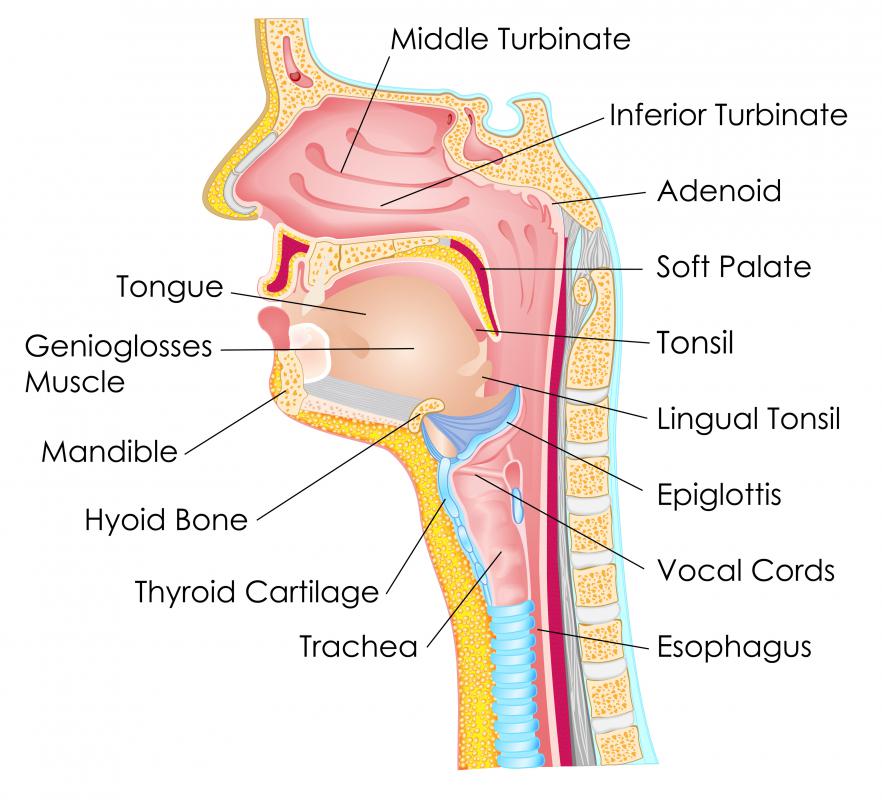At WiseGEEK, we're committed to delivering accurate, trustworthy information. Our expert-authored content is rigorously fact-checked and sourced from credible authorities. Discover how we uphold the highest standards in providing you with reliable knowledge.
What Is the Mandibular Ridge?
The mouth is created by two separate bones, the maxilla and the mandible. The maxilla, or upper jaw bone, is the result of a fusion of two bones that attach to the face through articulations or connection points on the head and facial bones. The mandible, or lower jaw, also consists of a combination of two bones fused together that attaches to the skull. This U-shaped bone has several distinguishing features, including an area called the mandibular ridge.
The mandible, the attachment site for the lower teeth and the only mobile bone of the jaw, is outfitted with several distinguishing features such as tubercles — also called nodules — as well as spines, notches and protuberances or bulges. The mandibular ridge is a section located in the front portion of the mandible bone, on the inside surface. This raised strip of bone is sandwiched between two shallow, outwardly curving portions of bone that house the sublingual and submandibular glands, also referred to as salivary glands.

Also called the mylohyoid line, the mandibular ridge serves not only as a protective outcropping for the salivary glands, it also provides an attachment point for the mylohyoid muscle. This muscle allows the mandible to depress or move downward. This action elevates the hyoid bone, a bone in the neck area, along with the floor of the mouth including the tongue; such movement is integral to the ability to speak and swallow food. Variations in the mandible’s surface also permit other muscles to attach to the jaw to allow for the teeth to breakdown food before it is swallowed.

Aside from providing the jaw with movement, the distinct characteristics of the mandible and the mandibular ridge allow the jaw to support and protect other vital structures such as blood vessels and nerves. For example, on the ramus, the lateral section of the mandible, there is an opening called the mandibular foramen. It is here where the inferior alveolar nerve and certain blood vessels run through the bone and supply nerve impulses and nutrients to the jaw. Near the mandibular ridge towards the lower end of the body of the mandible is a narrow channeled area called the mylohyoid groove. This indentation houses the mylohyoid nerve, which distributes nerve sensations to muscles such as the mylohyoid and the diagastric which aid in the elevation and depression of the mandible.
When problem occur with the jaw through injury or missing teeth, it may be necessary to perform a block bone graft or bone augmentation. Surgical procedures which replace or increase the bone size, or modify its shape become necessary when the structure of the jaw is altered. This can prevent problems with blood flow, nerve signals, speaking and chewing. Preserving the mandibular ridge, for example, may also avoid difficulties with the salivary glands.
AS FEATURED ON:
AS FEATURED ON:












Discuss this Article
Post your comments